When building a sim racing setup, there are certain things to keep in mind while buying to make sure you have the best racing experience. Things like compatibility, durability, and comfort play a pivotal role in helping you get the most out of your setup.
Sim racing is an expensive hobby and can put a hole in your pocket if you don't plan accordingly. This article will look at the most important things to keep in mind while building your sim-racing setup.
Note: This article reflects the writer's opinions.
What are the things to keep in mind while building a sim racing setup?
1) Supporting system
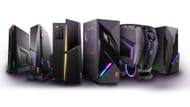
When building a sim racing setup, it is crucial to have a system powerful enough to support your sim racing hobby. Sim racing games can be quite performance-heavy and may require a powerful graphics card. When building your system, go for higher RAM, and a powerful CPU and GPU.
For example, this is how a decent setup would look like for Gran Turismo 7 and F1 23:
- OS: Windows 10 64-bit (Version 21H1 or higher)
- Processor (AMD): AMD Ryzen 5 2600X
- Processor (Intel): Intel Core i5 9600K
- Memory: 16 GB
- Graphics card (AMD): AMD RX 590 | For Ray Tracing: Radeon RX 6800
- Graphics card (NVIDIA): NVIDIA GTX 1660 Ti | For Ray Tracing: GeForce RTX 3070
- Storage: 80 GB
2) Monitor
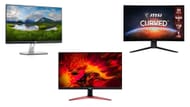
Monitors are your window to the world of sim racing and having a large setup can drastically improve your experience. Some users prefer having multiple monitors to create a 3-D viewing experience. However, that would be optional as it can get quite expensive. Our suggestion would be to have a large monitor (typically around 22-26 inches), a high refresh rate (144Hz or more), and lastly, a high resolution (1080p or higher).
A large screen would offer an immersive experience, and a 1080p monitor would display sharp visuals. A high refresh rate would reduce blur and make the fast-paced racing smoother.
Check out: 5 best budget 4K gaming monitors.
3) Steering wheel
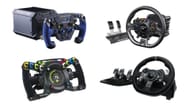
In a sim racing setup, steering wheels are a broad topic. This is because you could just buy a steering wheel, eradicate all other components, and still have fun racing. There are three kinds of steering wheels you can choose from, typically based on their force-feedback systems. There are gear-driven wheels, belt-driven wheels, and direct-drive wheels.
In short, gear-driven wheels are more entry-level and beginner-friendly. These wheels cater to new and casual sim racers. These wheels can get quite noisy and are aggressive in their feedback, but lack the right detail to match the realism.
Belt-driven and direct-drive wheels are more advanced. Most wheels on the market today are belt-driven and are popular typically due to their affordable rates and good force feedback. These wheels collect data from the game, which sends a signal to the motor that generates force feedback through a belt system. While these systems are better than gear-driven, there can still be delays at times.
Direct-drive wheels are for more serious sim racers looking for the most realistic driving experience possible. Gear-driven and belt-driven wheels operate using a gear or a belt, which takes away a lot of fidelity. In direct-drive systems, you get an electric motor that drives directly from the steering shaft, offering better fidelity and little to no delays in force feedback.
Refer to our article on sim racing steering wheels to have a better understanding.
4) Cockpit
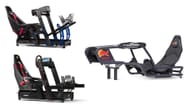
Before buying other peripherals, having a strong supportive base is crucial for your sim racing setup. Your cockpit or rig needs to be capable enough to support strong force feedback from your steering wheel, pedal, handbrake, and more. Having a provision to add other components is a big add-on as this lets you have room for upgrades along the way.
There are cockpits dedicated to almost every genre of sim racing like F1, GT, Rally, and others. These cockpits come in varying shapes and sizes and you can choose your rig based on your needs. Investing in a sturdy rig is crucial and can help improve your overall sim racing experience.
5) Pedals
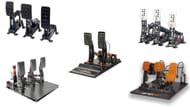
Last but not least, having proper pedals is the icing on the cake for your sim racing setup. Pedals and steering wheels are your connection to the game, as they transmit the force feedback and vibrations you experience in-game. Sim racing pedals with the right amount of resistance and force feedback would be perfect to enhance your overall gaming experience.
Pedals come in different variants, with some of them being designed for a particular genre of motorsport. Most of the time, pedals come as a combo along with steering wheels, so there's almost no need to make a second investment. Look up what suits your budget and try choosing the combo that has the best value. Buying these together makes your job easy as they're compatible with each other and you won't have to spend time researching.
Check out other sim racing articles by Sportskeeda:
F1 23 review - A fantastic racing sim that stops short of the podium's top step || Best racing games set to release in 2024: Test Drive Unlimited Solar Crown, Le Mans Ultimate, and more
